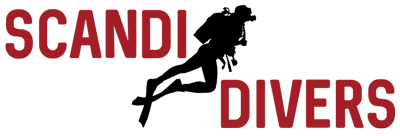
Aid groups and charities are working to help those affected by the typhoon, which has killed thousands.
The Philippine Red Cross is deploying rescue teams to affected areas of the country. Logistics equipment including mobile storage units, pre-fabricated offices and generators, is being sent from the UN humanitarian response depot (UNHRD) in Malaysia to set up operational hubs at Tacloban and Cebu airports. Some 300kg of IT equipment including digital radios are being sent from UNHRD in Dubai. The WFP is drawing upon $2m to buy high-energy biscuits and rice, but will be appealing for more funds as the needs become clearer. The UN’s World Food Programme is providing emergency food assistance to families and children. UNHCR, the UN agency for refugees, plans an emergency airlift of tents, plastic sheets, blankets, mats, water containers and cooking utensils for 16,000 families. UNHCR will also distribute 50,000 solar lanterns. Unicef is asking for funds to help children in urgent need of access to safe water, hygiene supplies, food, shelter and a safe environment. Click here for UK-based appeals Click here for Australia-based appeals Click here for US-based appeals
Readers in the UK can donate through these relief agencies:
British aid agencies have launched a joint emergency appeal to get food, water and shelter to victims of the typhoon. The Disasters Emergency Committee is made up of 14 aid charities. Oxfam is raising funds to deploy water and sanitation materials to those affected. ShelterBox is working to assist families affected by the typhoon. Care is delivering food, water, shelter and other essentials to the survivors. Save the Children has launched a typhoon Haiyan children’s relief fund to support their responses to urgent needs. Christian Aid has deployed three rapid response teams to affected areas in Samar, Leyte and Panay to assess the needs of communities. It is working with local partners to provide food, shelter repair materials and hygiene kits. Plan UK is providing shelters, hygiene kits and school equipment to families affected by the typhoon. The British Red Cross has launched an appeal. The International Rescue Committee (IRC) has sent an emergency team to Manila and launched a $10m appeal in order to implement the most appropriate response. HelpAge is working with the coalition of services of the elderly (COSE), to send staff to affected areas. It is developing a relief plan to meet older people’s most urgent needs. ActionAid has put a local assessment team on standby in Vietnam. Emergency teams from Médecins Sans Frontières arrived in thePhilippines on Saturday. Four cargo planes carrying 329 tonnes of medical and relief items will arrive in the coming days, flying out of Dubai and Ostende. Anglican Overseas Aid is swinging into action to bring urgent aid to people.
Readers in Australia can donate through these relief agencies:
ChildFund Australia is calling for donations to help provide emergency relief items and safe spaces for children. Plan International Australiais prioritising assisting children and will be providing shelters, hygiene kits and school equipment to families affected by the typhoon. World Vision Australia does not have a specific typhoon Haiyan appeal, but you can make donations to its emergency and preparedness fund, which will go towards its work – already under way – in the Philippines and Vietnam. Australia for UNHCR has mobilised teams to pool resources, food and non-food items and distribute them to victims of the typhoon. It is sending 200 tonnes of medical equipment as well as adding to its on-the-ground team with extra personnel, including medical staff and psychologists. The international Caritas network is responding to affected communities, providing shelter, clean water, sanitation, hygiene and household relief. The Australian Red Cross is also asking for donations to help in the provision of emergency relief, rehabilitation and recovery to both the Philippines and Vietnam. Médecins Sans Frontières is sending an extra 50 people to its team in Cebu. It is sending 329 tonnes of medical and relief cargo. Oxfam Australia is aiming to raise $17m in donations to provide relief to half a million people in affected communities in the Philippines.
Readers in the US can donate through these relief agencies:
The American Red Cross has sent relief specialists to the area and is set to send telecommunication specialists and supplies to the area. Its tracing system in place and Philippine Red Cross volunteers are providing local aid. Habitat for Humanity is aiming to raise funds to provide 10,000 core houses, cleaning kits for 50,000 families and shelter repair kits for 30,000 families in the affected areas. Catholic Relief Services has acquired 32,000 tarps and emergency supplies intended for the country. Its strategy is to serve 32,000 households in three areas: Ormoc, Palo and Basey. Direct Relief is collaborating with on the ground partner Asia America Initiative to deliver medical aid and flood relief supplies requested by the latter organization. Médecins Sans Frontières has sent emergency teams to the worst-affected parts of the country and a staff including doctors, psychologists and surgeons. Oxfam America is collecting money to rush emergency aid to the Philippines, including food, clean water, medicine, sanitation supplies and shelter. Operation USA is requesting donations for relief and recovery efforts and corporate donations of bulk supplies. It is also accepting air mile donations.


